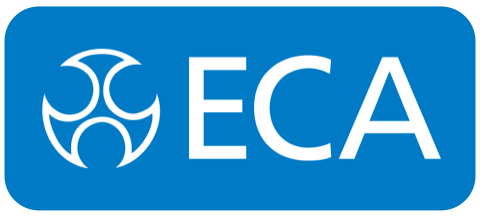- Home
- News
Ensuring Safety with Comprehensive Electrical Wiring Safety Inspections for Global Buyers
In today’s increasingly interconnected world, ensuring the safety of electrical wiring in residential and commercial properties has become paramount for global buyers. According to a report by the National Fire Protection Association (NFPA), electrical failures or malfunctions are responsible for approximately 50,000 home fires each year in the United States, resulting in billions of dollars in property damage and countless injuries. This alarming statistic underscores the importance of conducting thorough Electrical Wiring Safety Checks to identify potential hazards before they escalate into dire situations.
Moreover, with the rise of smart technology and the growing complexity of electrical systems, regular safety inspections have never been more critical. A study by the International Electrotechnical Commission (IEC) highlighted that nearly 30% of electrical incidents are attributable to outdated or improperly installed wiring. For global buyers, having a comprehensive understanding of electrical wiring safety not only mitigates risks but also ensures compliance with international safety standards. By prioritizing Electrical Wiring Safety Checks, buyers can protect their investments and contribute to a safer environment for all.

Understanding the Importance of Electrical Wiring Safety Inspections in Global Commerce
In the realm of global commerce, the importance of electrical wiring safety inspections cannot be overstated. With increasing international trade, businesses must recognize that substandard electrical systems can lead to catastrophic events, not only jeopardizing safety but also disrupting supply chains. According to the National Fire Protection Association (NFPA), electrical failures are the leading cause of fire incidents in commercial properties, accounting for 21% of all reported fires. Hence, thorough inspections can serve as a crucial preventative measure, safeguarding both life and property. The financial implications of neglecting electrical safety are significant. A report by the Electrical Safety Foundation International (ESFI) states that electrical injuries in the workplace cost businesses approximately $1.7 billion annually in medical expenses and lost productivity. For global buyers, ensuring the integrity of electrical systems isn’t just a matter of compliance; it’s integral to operational sustainability. Conducting regular inspections facilitates adherence to international safety standards and builds trust with customers, fostering competitive advantage in the marketplace. Moreover, as countries vary in their electrical safety regulations, a comprehensive inspection process is vital for businesses engaging in cross-border commerce. This ensures that electrical installations meet the respective country’s guidelines and minimizes the risk of non-compliance penalties. Global buyers must prioritize electrical wiring safety inspections as an essential part of their due diligence when sourcing products, ultimately contributing to safer work environments and more robust supply chains.

Key Statistics Highlighting Electrical Safety Risks in International Trade
Electrical safety is a major concern in international trade, with significant risks linked to poor wiring practices. According to the International Electrotechnical Commission (IEC), electrical accidents account for over 30% of all workplace incidents. This alarming statistic highlights the critical need for comprehensive electrical wiring safety inspections, especially for global buyers who must ensure that their products meet safety standards across borders.
A significant report by the National Fire Protection Association (NFPA) revealed that electrical failures were responsible for an estimated 24,000 civilian injuries and $1.5 billion in property damage in recent years. These numbers emphasize the importance of thorough inspections before products are utilized in various environments. Buyers engaging with international manufacturers should not overlook the necessity for rigorous safety checks, ensuring that wiring adheres to local and international standards to mitigate potential hazards.
Moreover, in a survey conducted by the Global Electrical Safety Organization, it was found that approximately 40% of international traders admitted encountering electrical safety issues within their supply chains. This statistic suggests that despite awareness, many are still vulnerable to risks due to inadequate inspections. Thus, implementing stringent electrical safety protocols and regular inspections is crucial for safeguarding employees and properties, fostering a safer trade environment globally.

Regulatory Standards and Compliance for Electrical Wiring Inspections Worldwide
When it comes to electrical wiring safety inspections, understanding regulatory standards and compliance is crucial for global buyers. Each country possesses its own specific set of regulations governing electrical installations to ensure safety and functionality. For instance, the National Electrical Code (NEC) in the United States outlines comprehensive guidelines that must be followed to minimize the risk of electric shocks, fires, and other hazards. Buyers engaged in international trade must be well-versed in these diverse regulations to avoid legal repercussions and ensure the safety of their electrical systems.
Compliance with regulatory standards not only helps in maintaining safety but also enhances the credibility of businesses. Many countries have adopted the International Electrotechnical Commission (IEC) standards, which provide a consistent framework for electrical safety across borders. By adhering to these standards, companies can assure their clients and stakeholders that their electrical systems meet globally recognized safety benchmarks. Furthermore, failing to comply with these regulations can lead to costly penalties and damage to reputation, making it imperative for buyers to prioritize safety inspections that align with international standards.
Moreover, regular safety inspections conducted by qualified professionals are essential in identifying potential dangers and ensuring ongoing compliance with local and international regulations. These inspections assess factors such as wiring conditions, installation integrity, and overall system functionality. Companies that invest in thorough electrical inspections not only protect their investments but also foster a safer environment for employees and customers alike.

Best Practices for Conducting Comprehensive Electrical Wiring Safety Inspections
Ensuring safety through comprehensive electrical wiring safety inspections is crucial, especially in environments like ships where fire hazards can pose severe threats. As vessels operate in unpredictable conditions, the integrity of electrical systems becomes paramount. By implementing best practices during inspections, stakeholders can significantly reduce the risk of electrical fires and ensure the protection of crew and cargo alike.
To conduct effective electrical wiring safety inspections, it is essential to establish a systematic approach. This includes checking for proper installation, wear and tear, and compliance with regulations. Inspectors should assess circuit integrity and look for any signs of overheating or insulation failure. Regularly scheduled inspections, coupled with ongoing training for electrical personnel, can enhance awareness of potential hazards and promote a culture of safety on board.
Additionally, in light of recent incidents and rising temperatures contributing to fire risks, inspections should also focus on environmental factors that could affect electrical systems. High temperatures can exacerbate electrical issues, making it necessary to evaluate systems under varying conditions. By adhering to these best practices, maritime operators can ensure their vessels are not only compliant but also safe from the hidden risks that lurk within complex electrical systems.
The Role of Technology in Enhancing Electrical Wiring Safety Inspection Processes
As the demand for safe and reliable electrical wiring continues to grow globally, incorporating advanced technology into inspection processes is becoming increasingly vital. Recent reports indicate that electrical failures account for approximately 10% of all fire incidents, underscoring the necessity of robust safety inspections. Leveraging technology such as drones and thermal imaging cameras can significantly enhance the efficiency and accuracy of these inspections.
Drones enable inspectors to access hard-to-reach areas with minimal risk, allowing for thorough assessments without disrupting operations or compromising safety. According to a study by the National Fire Protection Association (NFPA), the use of drones has reduced inspection times by up to 30%, empowering inspectors to cover more ground effectively. Furthermore, thermal imaging can identify overheating wires and faulty connections that are invisible to the naked eye, providing another layer of safety assurance.
Data analytics also plays a crucial role in modernizing electrical wiring safety inspections. By collecting and analyzing historical inspection data, companies can identify patterns and predict potential risks, leading to more proactive maintenance strategies. A report from the International Electrotechnical Commission (IEC) suggests that predictive analytics can decrease the likelihood of electrical failures by up to 40%. Thus, as the global marketplace increasingly prioritizes electrical safety, investing in technological advancements for wiring inspections is essential for minimizing risks and ensuring compliance with safety standards.
